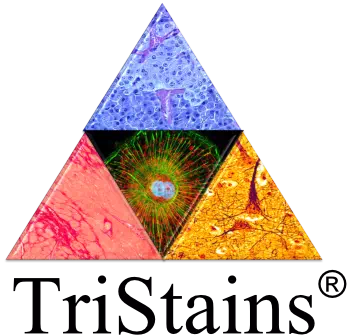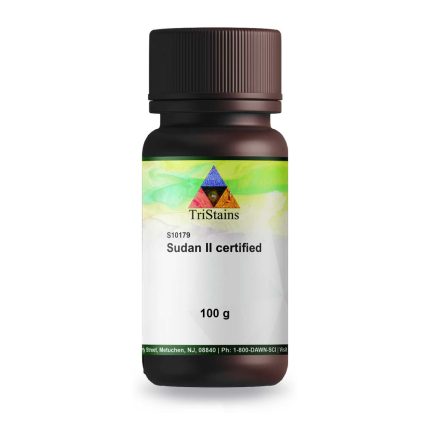Buy Acridine Orange (10127-02-3) MF: C17H19ClN3•HCl•1/2ZnCl2 | MW: 369.96. Get High Quality Acridine Orange (10127-02-3) from Tristains.
Acridine Orange is a cell-permeant nucleic acid binding dye that emits green fluorescence when bound to dsDNA and red fluorescence when bound to ssDNA or RNA. When acridine orange binds to DNA, the dye exhibits a maximum excitation at 502 nm producing a maximum emission of 525 nm. When bound to RNA, acridine orange displays a maximum emission value of 650 nm and a maximum excitation value of 460 nm. It is also known to be a positive solvatochromic dye. Acridine orange has also been used as a lysosomal dye. The other names of it are 3,6-Acridinediamine, Acridine Orange Base, Acridine Orange NO, Basic Orange 14 etc. Acridine Orange is commonly used as a fluorescent stain in microbiology and histology.
“TriStains”, Histological Stains/Biological Stains that offer range of stains used in Histology, Cytology, Microbiology and Hematology laboratories. TriStains meet the highest quality standards and give excellent color performance of desired components of cells and tissue in life science laboratories. TriStains series products are carefully tested to ensure accurate, reliable, and reproducible results. Our products are available in different packaging sizes to allow you to get all types of stains & Indicators for your specific purposes from a single source.
In-addition Tristains also deals in numerous Laboratory Supplies, Chemicals, Equipment, Instruments, Reagents, Standard Solutions, Buffers, Histological Stains/Biological Stains & Indicators and many more, for more information please visit our website www.tristains.com or email to sales@tristains.com we will be happy to help you. All Tristains Products are exclusively distributed by Dawn Scientific Inc (https://dawnscientific.com)
Application :
- Acridine orange is useful for cell-cycle studies.
- It is used as a fluorescent staining agent to detect the presence of bacteria in blood cultures and other bodily fluids.
- It is useful in the rapid screening of ordinarily sterile specimens.
Benefits :
- Able to withstand low pH environments
- Differentiate various types of cells (i.e., bacterial cells and white blood cells)
- High quality and good effectiveness



















Reviews
There are no reviews yet.